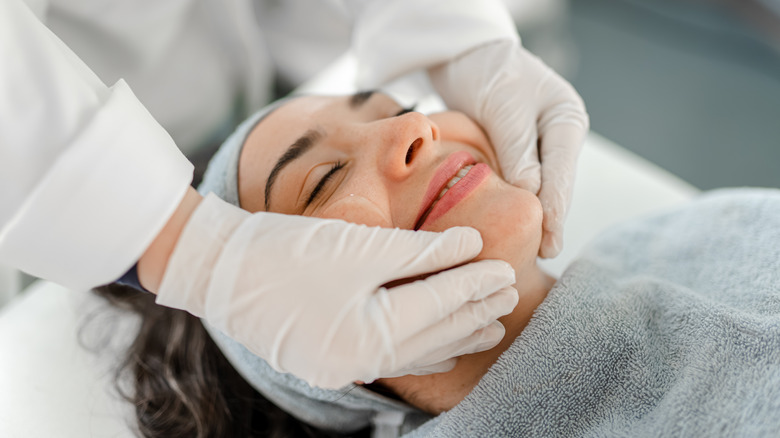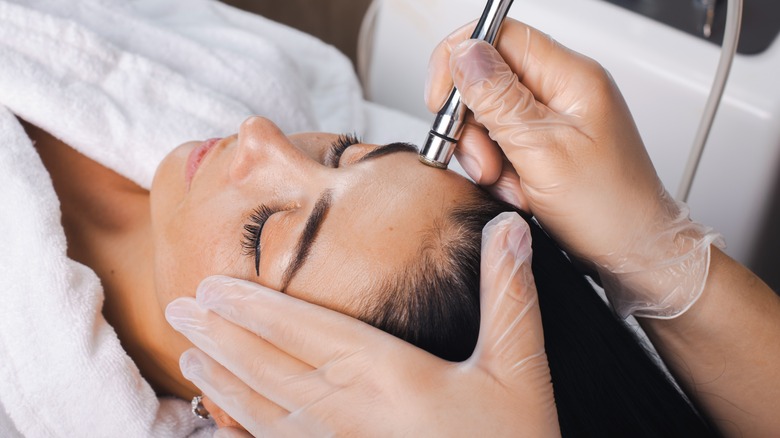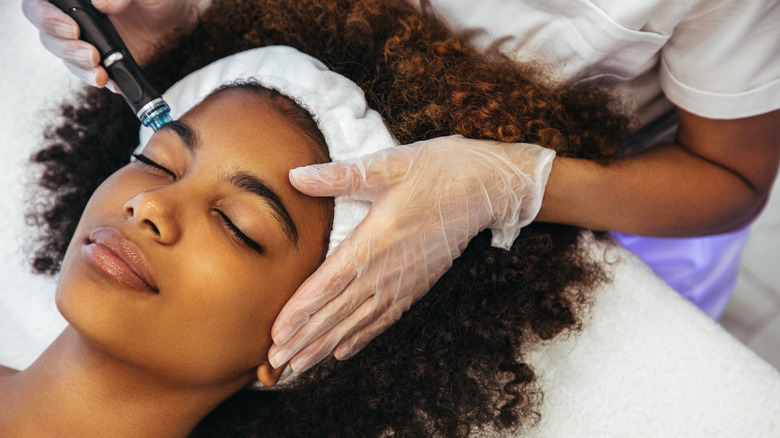What Is Micro-Coring, And How Can It Tighten Your Skin?
Since the dawn of time, people have searched for ways to maintain their youthful appearance — and gone to great lengths to do so. During the Ptolemaic dynasty, Cleopatra bathed in spoiled donkey's milk to keep her skin looking firm and wrinkle-free, while a few thousand years later in the 16th and 17th centuries, Countess Elizabeth Báthory reportedly washed with the blood of virgins hoping for the same result: eternal youth. Gruesome methods for sure, but no one ever said staving off wrinkles was going to be easy.
Thankfully, the world has evolved quite a bit since the days of donkey milk and virgins' blood. It's even moved well past the first facelifts of the early 20th century and into gentler skin-tightening treatments that require little to no downtime, like Botox and microneedling. We also have something called micro-coring, which may sound like a stomach exercise, but it's not. "The technology is based on the fact that one of the ways a wound heals is contraction if there is a hole in the skin, the body literally shrinks the hole," board-certified plastic surgeon Darren M. Smith, MD, FACS told Byrdie. What micro-coring does is literally scoop out tiny bits of skin, "making the skin contract, [forming] new collagen and elastin, and [tightening] skin in the area." About 4-8% of the skin is removed — roughly 6,000 to 12,000 micro-cores — to get this effect.
While it seems a little cringe in theory, apparently it's all the rage at the moment. So if you want to tighten up your skin and diminish those fine lines and wrinkles, this might be the non-invasive procedure for you.
The benefits of micro-coring
For starters, it's a great alternative to more invasive treatments like facelifts and is even suitable for those who have lost quite a bit of elasticity. "A facelift reshapes the underlying tissues and removes extra skin but does not rejuvenate the skin itself," board-certified plastic surgeon Dr. Jason Pozner told InStyle. "With micro-coring, we can get rid of some of the excess skin on the face without scarring, and the micro-punctures help renew the skin." Traditional facelifts leave behind scars and lasering options can sometimes go awry, causing thermal injury or crustiness due to the superficial burns that take time to heal, as board-certified dermatologist Dhaval Bhanusali, MD told Allure.
Each session takes about 30 to 45 minutes, and you'll need about two to three rounds before you'll see your wrinkles and lines diminish. But what's great about micro-coring is that if you do it in your 40s or 50s, you can possibly avoid more extreme treatments in the future. "If you slow the accumulation of fine lines, skin laxity, and collagen loss, you may never get to the point where you require an aggressive procedure," board-certified dermatologist Michelle Henry told Harper's Bazaar. For downtime, you're looking at no more than three to four days after each micro-coring treatment.
Does it work?
According to a 2022 study published in the International Open Access Journal of the American Society of Plastic Surgeons, micro-coring appears to be effective for moderate to severe wrinkles on the face. As the research found, of the study's 59 participants, the majority were satisfied with 85.6% of the results on the sites where they had the treatment done, citing "significant improvement of facial wrinkles." Of course, results vary from patient to patient just as they do with all skin treatments, but having over 80% of the respondents reporting "high patient satisfaction" definitely says something about the effectiveness of micro-coring.
With so many treatments out there to choose from, it's best to talk to your dermatologist about your skin goals, and then go from there. While some skin might be prime terrain for micro-coring, other skin types might require something else instead. However, it should be stated that this isn't a cheap option, each session costs an average of $3000. But if you regard it as an investment in your skin's forever youthful appearance, then you might be able to reconcile the price. It's also not human blood or sour donkey's milk, so that's definitely a bonus.


